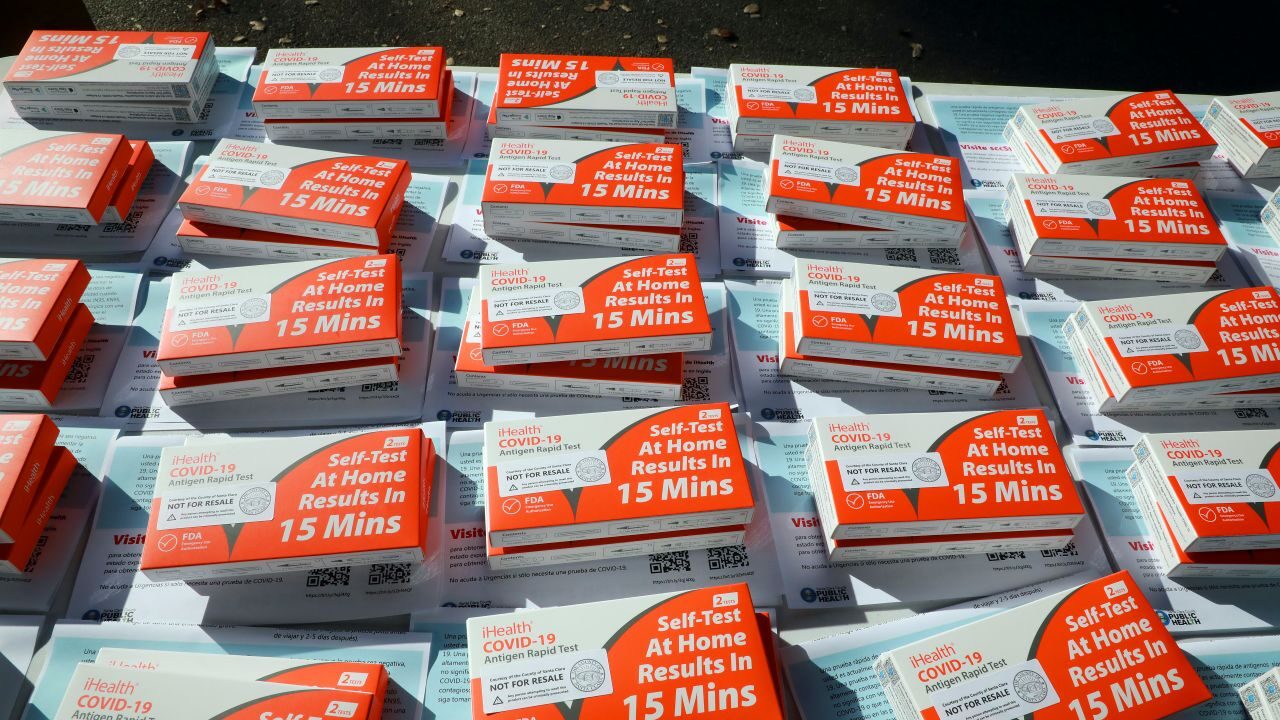The CDC's forecasting model estimates that COVID infections are growing, or likely growing, in most states. (Jim Wilson/The New York Times/File)

- The CDC's forecasting model estimates that COVID infections are growing, or likely growing, in most states.
- Texas, Utah and Nevada are showing very high concentrations of COVID in their wastewater.
- By the time summer rolls around, immunity tends to wane, and people are susceptible to getting sick again.
Share
|
Getting your Trinity Audio player ready...
|
COVID cases are climbing again this summer.
The Centers for Disease Control and Prevention’s forecasting model estimates that infections are growing, or likely growing, in most states.
While the agency is reporting low levels of the virus in wastewater nationally, some states, including Texas, Utah and Nevada, are showing very high concentrations of COVID in their wastewater. Emergency department visits linked to COVID are rising, too.
Researchers have braced for an uptick. Though the virus is largely unpredictable — variants shape-shift and symptoms can change from one infection to the next — COVID cases have gone up every summer since the pandemic began.
Around this time last year, there were higher levels of COVID in wastewater than there are currently; this appears to be, so far, a milder wave.
As of June, when the CDC last updated its variant tracker, the COVID variant NB.1.8.1. — nicknamed “Nimbus” — accounted for the most cases in the United States, around 43%.
The variant does not appear to make people sicker than other recent strains of the virus, but it does have a few additional mutations that might make it more transmissible and better at evading the immune system’s defenses, said Dr. Aubree Gordon, an infectious disease epidemiologist at the University of Michigan.
The latest data suggests that while we’re not in a full-on surge, we are in a late summer upswing, said Dr. Ziyad Al-Aly, a senior clinical epidemiologist at Washington University in St. Louis.
“Very clearly, the numbers are going up,” he said. “It’s here.”
Scientists point to a few reasons the virus reliably spreads each summer:
People Spend Time Air-Conditioned Spaces
Summer spikes may seem counterintuitive: People often spend more time outside when the weather’s warm, and the virus has a much harder time circulating outdoors.
But the heat also drives people inside to seek refuge in air-conditioned spaces with no windows open, leading to poor ventilation. The colder the environment, the longer the virus survives, and the easier COVID spreads, Al-Aly said.
Summer Travel and Crowds Fuel the Spread
People travel more during the summer, cramming into airports and packing into trains. The Fourth of July holiday, in particular, creates a “ripe breeding ground for COVID to run around,” said Dr. Davey Smith, an infectious disease specialist at the University of California, San Diego, similar to how infections tend to rise after Thanksgiving and Christmas.
Even if people are outside at an event like a music festival, the virus can still spread in crowds. Infected people breathe out respiratory droplets and tiny particles of virus; when people wedge tightly enough together, they can inhale those contaminated droplets.
Immunity to the Virus Can Fade by Summer
COVID, like many respiratory viruses, also rises in the winter. People who get COVID during the winter months will likely have good protection from reinfection for around four to six months, depending on how quickly new variants develop, Smith said.
But by the time summer rolls around, immunity tends to wane, and people are susceptible to getting sick again. The same goes for people who get vaccinated in the fall or winter; their immunity dwindles, Al-Aly said, enabling a wave of new cases.
Bottom Line: If You Feel Sick, Test
COVID strikes in the summer more often than some other respiratory viruses with similar symptoms. If you’re coughing and sniffling during summer, you may be more likely to have COVID than the flu or respiratory syncytial virus — and you should reach for a COVID test, Al-Aly said.
The summer uptick underscores the importance of getting vaccinated, he added. But it’s unclear currently how widely available updated COVID vaccines might be this year.
The rising levels of COVID don’t present a “panic situation,” Al-Aly said, but people should “be aware that numbers are now higher than they were a couple months ago.”
This article originally appeared in The New York Times.
By Dani Blum/Jim Wilson
c.2025 The New York Times Company




















